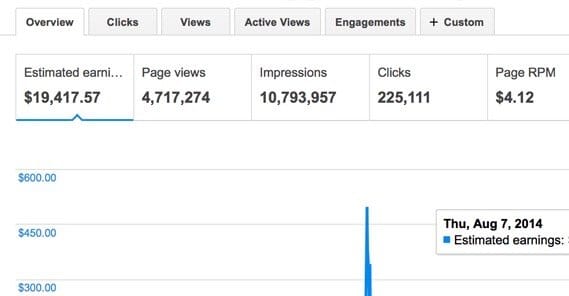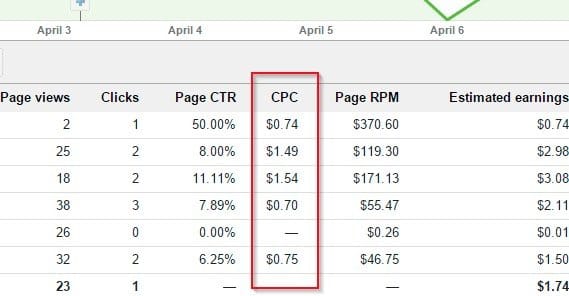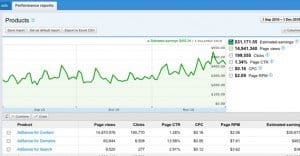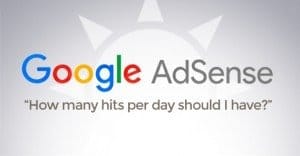Should You Pay to Send Traffic to an AdSense Site?

AdSense can be a good method for monetizing a blog, but it does have some issues. Foremost among them is the issue of volume. Since AdSense is a pay per click network, and since their actual cost per click is relatively low, you really need a lot of volume to make any significant amount of money from them. Some sites get this volume through sheer masses of content, with thousands of monetized pages. Others need to focus on having content go viral, and getting that volume on just a relative few posts.
In order to get this kind of volume, people start looking for methods to get more traffic to their sites. One such method that comes up in pretty much every article on the subject is paying for traffic. So, you might be tempted to pay for traffic so you can earn more from your traffic, but the question is: should you do it?
Google’s Rules
The first question you should ask yourself is not “should I do this?“, it’s “is it safe to do this?” If it’s going to get you banned from AdSense, it’s certainly not something you want to do, right? There’s no sense in jeopardizing your entire monetization structure just to make a few more dollars this month.
We have actually covered this topic before, right here. You can read that in its entirety, but I’ll summarize the salient points here.
First of all, Google doesn’t directly prohibit buying traffic to a site that has AdSense as a monetization method.

They specifically say that you’re welcome to promote your site however you want, so long as those methods don’t violate the program policies. The only policy violation you could encounter is buying bad bot traffic or fake traffic that trips Google’s exploit filters, and will get you removed from the program.
What this generally means is that, while you can buy traffic, you should avoid sellers on sites like Fiverr or UltraGreatTotallyRealTraffic.biz, or whatever comes up when you search. If you’re getting “unique” visitors for next to free, you can bet that you aren’t getting real users. Real users tend to be more expensive.
Traffic Quality
When you’re buying traffic with the express purpose of monetizing it, you have to be aware of the quality of that traffic. Remember, AdSense is a pay per click, not a pay per view platform. That means traffic that is nothing more than views won’t earn you a single penny more than you were making before.
Fake traffic doesn’t click ads. Low quality clickfarm-style traffic rarely clicks ads, and never converts on the other side of those ads. It can potentially earn from AdSense, though the ads targeted at people from the Middle East are likely to be pretty cheap. This is actually even riskier! Google will automatically filer a lot of bot traffic and not necessarily count it against you, but bad clicks look a lot more like intentional fraud and will be more likely to get you removed from the AdSense program.
You need to buy the highest quality, most targeted traffic you can get. Of course, this means you end up spending more for your visitors, which means you end up with high costs just to make money.
Yes, you need to spend money to make money, but you need to keep one thing in mind:
Remembering ROI
Your Return on Investment is the crucial measurement when you’re considering buying traffic to monetize it.
An average low-end CPC for AdSense might be somewhere around 10 cents per click. If you’re getting 1,000 clicks per month right now, that’s about $100, though nothing is ever so precise in marketing math.
Now say you find some place that sells you 10,000 clicks for $100. You decide to try it and spend what is essentially an entire month’s income on those visitors. You discover that those ten thousand visitors have a very low conversion rate, about one in a thousand, so you only actually end up with 10 more clicks. That earns you $1.
You spend $100 to earn $1, leaving you at -$99 for the month. Not really a good proposition, is it?
Of course, all the numbers here I’ve basically just made up. It’s all a very simple thought experiment to illustrate the importance of your return on investment. You want to be making a profit with what you’re doing, in some way or another. Website optimizations might not make a direct profit, but they improve your search ranking and grow your site over time. Buying traffic is not a long-term venture, however. Purchased traffic exists for exactly as long as you’re spending to bring that traffic in. Once you stop paying, that traffic stops showing up.
There are a few ways you can attempt to make this a profitable venture.
Ensuring Positive ROI
You can make a profit from buying traffic, but you need to go about it very carefully. One wrong move and you’re going to lose out on potentially a lot of money, and dig a hole it can be difficult to climb out of.
1: Make sure your traffic is as high converting as possible. The higher the percentage of the traffic that converts, the more you’re making per thousand hits you buy, and thus the higher the chance you have of having a positive return on your investment.
Of course, this is a delicate balancing act. Higher quality, higher converting traffic comes from sites that know they have that high quality traffic, and can thus charge more for their ad space. This means you’re likely to pay more for that traffic, which in turn means it’s harder to get a positive return on your investment.
What you need to do, then, is find the good middle of the road. Too high quality and the traffic costs too much. Too low quality and the traffic doesn’t convert enough.
I recommend using Facebook ads for some easy and cheap targeting. Facebook is by far the most robust ad program on the planet right now, with thousands of targeting options you can explore. You can get cheap traffic from it – though ultra-cheap traffic is likely to be low quality – and you can explore deep, detailed targeting options. You might be able to hack it down to cheap clicks that still convert.
2: Make sure your ads are paying as much as possible. There are a lot of factors you can manipulate to increase your CPC on AdSense. Having higher quality traffic will encourage advertisers to pay more for space on your site, so this plays into the first point. However, there are other factors as well.
A lot of mechanical factors go into your CPC as well. In particular, targeting specific keywords will have a large impact. Some keywords are very cheap, others are very expensive, and most are in the middle of the bell curve. You’ll want to do research with tools like the Google Keyword Planner and its alternatives in order to find keywords with relatively high CPC. Of course, you can’t target too high, because then you have extremely stiff competition for the traffic, and that traffic is likely to ignore your site in favor of bigger names who can spend more on ad space.
You also want to avoid putting too many ads on content that has too little value. This has been generally good advice for a while, but Google recently rolled out an update labeled “Fred” that specifically targets advertisers who have relatively low value content for relatively dense ads. In general, 1-2 ad units on valuable content is better than 2-3 ad units on lower value content. Quality over quantity, as is so often the case with marketing.
You can also put some work into optimizing the flow of your site, your design, and your media. All of this is covered here if you want some ideas.
3: Carefully monitor and cut ads that don’t return. AdSense allows you to cut specific advertisers, advert categories, and other elements of the program to customize your ad experience. If you find that certain keyword categories are repeatedly not converting when they display on your site, you can block them, so they stop appearing. It’s probably beneficial to everyone involved; your customers clearly don’t care about the ads, you make more money without them taking up space, and the advertisers lose a source of low-converting traffic.
One thing you have to watch out for, though, is fill rate. Fill rate is the percentage of time ads are appearing on your site. Ideally, if you have an ad unit, your fill rate for that ad unit is at or near 100%. You always want an ad there, or else you have traffic that is using your site without seeing ads. A lower fill rate means a lot of lost opportunities.
It’s up to you to determine, through testing, whether a lower fill rate with higher conversions or a higher fill rate with lower conversions works best for you. Sometimes volume will be better, and sometimes the opposite is true. Thankfully, it’s easy enough to test.
4: Attempt to convert paid visitors to non-paid traffic streams. This is the big one; every visitor that comes in from another location is a potential visitor you can convert into a satisfied reader.
The idea is that you want to convert those paid visitors into free visitors. If they come back organically, they’re not costing you money the second time around, but they could potentially earn you money. The more people you have in this position, the better off you are.
How can you convert PPC traffic into organic traffic? You need to appeal to those users in such a way that they remember you and come back on their own. There are a few ways you can do it.
- Content. Having extremely high value content, particularly evergreen content, is likely to help you out here. Reference guides and tutorials are great here; they’re the kind of content a user might say “hey I want to do this later” and will come back when they have time to browse in detail or follow along. However, any sufficiently strong and repeatable content can prevail here.
- Mailing Lists. Converting users to a mailing list means you can market to them directly, for free, via email later. Your mailing list is generally comprised of your most interested visitors, meaning they have the highest conversion rates and are the best source of traffic in the future.
- Strong Branding. To a certain extent, just having a strong visual style and distinct name is going to go a long way. If you’re memorable, people will be more likely to think of you when they think of a topic they associate with you, which is probably what brought them to your site in the first place.
- Remarketing. If you have the right kind of tracking code on your site, you can build an audience out of the people who have visited your site through ads – or through organic links – and can target them in future ads. Sure, this is still paid visitors, but they’ll be a more targeted audience of more interested people, so they cost less and convert more.
All of this will stack up to increase your conversion rates, increase the quality of your traffic, and allow you to make money when you spend money.
So, should you pay for traffic when you’re using AdSense to monetize your site? The answer is a qualified yes. If you can swing a profitable ROI when you do it, by all means, invest in ads. If you don’t make money when you spend it, all you’re doing is losing money, so you might as well not bother.
 ContentPowered.com
ContentPowered.com







